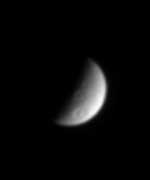On the evidence to date, our solar system could be fundamentally different from the majority of planetary systems around stars because it formed in a different way. If that is the case, Earth-like planets will be very rare. After examining the properties of the 100 or so known extrasolar planetary systems and assessing two ways in which planets could form, Dr Martin Beer and Professor Andrew King of the University of Leicester, Dr Mario Livio of the Space Telescope Science Institute and Dr Jim Pringle of the University of Cambridge flag up the distinct possibility that our solar system is special in a paper to be published in the Monthly Notices of the Royal Astronomical Society.
In our solar system, the orbits of all the major planets are quite close to being circular (apart from Pluto’s, which is a special case), and the four giant planets are a considerable distance from the Sun. The extrasolar planets detected so far – all giants similar in nature to Jupiter ? are by comparison much closer to their parent stars, and their orbits are almost all highly elliptical and so very elongated.
“There are two main explanations for these observations,” says Martin Beer. “The most intriguing is that planets can be formed by more than one mechanism and the assumption astronomers have made until now – that all planets formed in basically the same way – is a mistake.”
In the picture of planet formation developed to explain the solar system, giant planets like Jupiter form around rocky cores (like the Earth), which use their gravity to pull in large quantities of gas from their surroundings in the cool outer reaches of a vast disc of material. The rocky cores closer to the parent star cannot acquire gas because it is too hot there and so remain Earth-like.
The most popular alternative theory is that giant planets can form directly through gravitational collapse. In this scenario, rocky cores – potential Earth-like planets – do not form at all. If this theory applies to all the extrasolar planet systems detected so far, then none of them can be expected to contain an Earth-like planet that is habitable by life of the kind we are familiar with.
However, the team are cautious about jumping to a definite conclusion too soon and warn about the second possible explanation for the apparent disparity between the solar system and the known extrasolar systems. Techniques currently in use are not yet capable of detecting a solar-system look-alike around a distant star, so a selection effect might be distorting the statistics – like a fisherman deciding that all fish are larger than 5 inches because that is the size of the holes in his net.
It will be another 5 years or so before astronomers have the observing power to resolve the question of which explanation is correct. Meanwhile, the current data leave open the possibility that the solar system is indeed different from other planetary systems.
Original Source: RAS News Release

